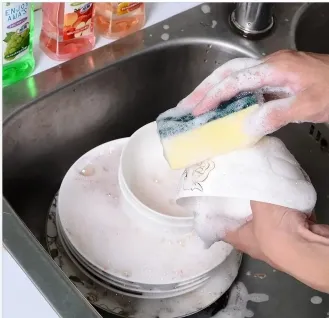Sodium tripolyphosphate (STPP) is a vital ingredient in detergents, playing a key role in enhancing cleaning power and maintaining product stability. Whether it’s used in detergent powder or liquid formulations, understanding the purpose and optimal amount of STPP in detergent can help both manufacturers and consumers make informed choices. This article explores how STPP functions, its impact on detergent performance, and how it is incorporated into detergent production.
1. What Is Sodium Tripolyphosphate (STPP)?
Sodium tripolyphosphate (STPP) is a chemical compound with the formula Na5P3O10, often used as a builder in detergent formulations. It is highly soluble in water, which makes it an effective additive in both liquid and powder detergents. STPP’s main function is to improve the cleaning efficiency by binding with calcium and magnesium ions, which are common in hard water.
The ability of STPP to prevent mineral interference ensures that surfactants— the active cleaning agents—perform efficiently. Its versatility makes it a staple in synthetic detergent production, offering benefits beyond cleaning, including improved product texture and stability.
2. Why Is STPP Used in Detergent Formulations?
STPP enhances detergent performance in several ways. First, it softens water by sequestering calcium and magnesium ions, ensuring that detergents work effectively, even in hard water. Without STPP, detergents may leave residues or fail to remove stains completely.
Additionally, STPP helps suspend dirt particles in water, preventing them from settling back onto fabrics. This ensures brighter whites and cleaner clothes. Its versatility also means it can be used across various detergent types, from household laundry detergents to dishwashing liquids.
3. How Much STPP Content Is Typically Found in Detergents?
The typical STPP content in detergents ranges from 15% to 35%, depending on the product type and intended use. High-performance detergents often contain a higher percentage of STPP to handle tough stains and hard water conditions. In contrast, eco-friendly detergents may limit STPP content or replace it with other additives to meet environmental standards.
Some manufacturers adjust STPP levels based on the target market. For instance, detergents sold in areas with hard water may contain higher amounts of STPP compared to those intended for soft water regions.
4. How Does STPP Improve Detergent Powder Performance?
In detergent powders, STPP acts as a flow agent, preventing clumping and ensuring the powder remains free-flowing. This makes it easier to measure and use. STPP also helps maintain the solubility of the detergent, ensuring that the powder dissolves completely during the wash cycle.
The use of STPP in powder detergents guarantees optimal performance across different water temperatures, whether it’s a hot or cold wash. It ensures that dirt and stains are effectively lifted from fabrics, leaving clothes cleaner and fresher.
5. STPP’s Role in Synthetic Detergent Formulations
Synthetic detergents rely heavily on STPP to maintain their effectiveness in various water conditions. Unlike natural soaps, synthetic detergents can struggle to perform well in hard water without the use of a builder like STPP. Its ability to enhance surfactant efficiency makes it a crucial ingredient in many modern formulations.
In recent years, there has been growing interest in phosphate-free alternatives. However, these substitutes often come with trade-offs in cleaning performance, particularly in hard water regions. As a result, many manufacturers continue to include STPP in their formulations to deliver the desired cleaning results.
6. What Is the Ideal Solubility of STPP in Detergents?
STPP is highly soluble in water, which is essential for ensuring even distribution throughout the wash. Its solubility allows it to dissolve quickly in both hot and cold water, making it effective in a variety of wash settings. The ability to dissolve fully prevents residues from forming on clothes, leaving them clean and residue-free.
The solubility of STPP also affects the detergent’s ability to penetrate fabric fibers, which is critical for removing deep stains. This property is particularly important in detergents designed for industrial and commercial use, where cleaning power is a priority.
7. How Is STPP Incorporated into Detergent Production?
In detergent production, STPP is added during the blending stage to ensure it is evenly distributed throughout the product. For powder detergents, STPP is mixed with other dry ingredients before packaging. In liquid formulations, it is dissolved into the detergent base to ensure complete solubility.
STPP plays a stabilizing role, preventing the separation of ingredients over time. This ensures that both detergent powders and liquids maintain their effectiveness throughout their shelf life.
8. Environmental Impact of STPP in Detergents
While STPP offers numerous benefits, its use has raised environmental concerns. Phosphates like STPP can contribute to eutrophication when they enter water bodies, leading to excessive algae growth. This has prompted some regions to introduce regulations limiting phosphate levels in detergents.
In response, many manufacturers are exploring phosphate-free formulations or reducing STPP content to meet environmental standards. However, STPP remains popular due to its superior cleaning performance, especially in hard water conditions.
9. How to Choose the Right Detergent with STPP?
When shopping for detergents, look for labels indicating STPP content. Products designed for hard water areas typically contain higher levels of STPP. If you prefer environmentally friendly options, consider detergents with reduced phosphate content or phosphate-free alternatives.
Understanding your water type and laundry needs will help you select the most effective detergent. For heavily soiled laundry, a detergent powder with high STPP content may provide the best results.
10. The Future of STPP in Detergent Formulations
The future of STPP in detergents lies in balancing performance with environmental responsibility. While phosphate-free alternatives are gaining popularity, STPP continues to be an essential ingredient in many markets. Innovations in detergent production may lead to new formulations that retain the benefits of STPP while minimizing its environmental impact.

